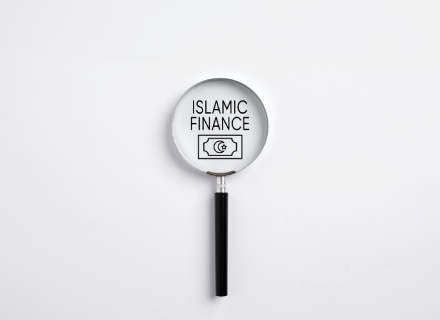S&P Global Ratings expects strong growth in the UAE’s Islamic Finance sector to continue over the coming period, supported by the strong performance of the non-oil economy.
According to the agency, the Gulf giant has seen significant growth in Sukuk in foreign currency issuance since the beginning of 2024, with issuance activity in the real estate and financial institutions sectors, amid the government’s drive to attract more foreign capital.
S&P Global further indicated that interest rate cuts are anticipated to continue until the end of 2025, fostering global issuance growth. The UAE’s insurance sector, both conventional and Islamic, is projected to expand by 15-20%, driven by economic performance and infrastructure projects.
Speaking to Emirates News Agency (WAM) during the 14th edition of the Annual Islamic Finance Conference organised by S&P Global Ratings and Dubai International Financial Centre (DIFC), the rating agency’s analysts indicated that sustainable finance presents new funding opportunities, particularly in oil-exporting nations pursuing carbon neutrality, while highlighting that the UAE is a key market for sustainable issuances in the Gulf region.
Dr. Mohamed Damak, Global Head of Islamic Finance, S&P Global Ratings, said, “The global Islamic Finance industry is witnessing remarkable growth, with total assets reaching USD 3.3 trillion by the end of 2023, an increase of 8 per cent compared to the previous year. All sectors related to the industry have witnessed remarkable growth, especially the Islamic banking sector in the Gulf Cooperation Council (GCC).”
He also noted that the volume of Sukuk issuances stabilised during the first half of 2024, despite challenges in some markets, with local currency issuances declining due to the higher interest rates in Turkey, which impacted the growth of the sector there.
Damak further stated that S&P expects the Islamic Finance sector to grow at a high single-digit rate through 2024 and 2025, fuelled by financing needs in key countries. As the United States Federal Reserve anticipates 225 basis points of interest rate cuts by the 2025 end) including the 50 basis points already cut in September 2024), it will further enhance market liquidity and promote increased Sukuk issuance.
Rawan Oueidat, Director at S&P Global Ratings, forecast that sustainable bond issuance, including green, social, and sustainability bonds, will stabilise at approximately USD 1 trillion in 2024. “While Europe and the Asia-Pacific are expected to remain the primary markets for sustainable bonds, the Middle East’s contribution will be limited to under 3%.”
She added that total issuances reached USD 16.7 billion, influenced by rising interest rates that have diminished demand for these investment instruments. UAE and Saudi Arabia became the key markets for sustainable issuances, with sustainability Sukuk demand in the Middle East rising to approximately USD 6.1 billion in the first nine months of 2024, increasing their market share to 25-30% from 20-25% in 2023.
Not only S&P Global, but even FTSE Russell held a similar view on the Gulf region’s Islamic financial market. Fiona Bassett, the CEO of the subsidiary of the London Stock Exchange Group, highlighted the UAE’s leading role as a beacon of financial innovation in the Middle East and its position as a leading centre for Islamic Finance.
“We’re seeing growing investor interest, both domestic and international, driven by the region’s expansion. This reflects the growing importance of the UAE on the global stage,” she told the Emirates News Agency (WAM) on the sidelines of the launch of the FTSE ADX 15 Islamic Index.
According to the Islamic Finance Development Report 2023, the global Islamic Finance industry experienced substantial growth, with assets rising by 11% in 2022 to reach USD 4.5 trillion. Islamic banking constituted 72% of this total. Since 2012, the industry has grown by 163% and is expected to expand to USD 6.7 trillion by 2027.
“For us, this is, providing a toolkit for investors to meet the burgeoning demands that we’ve seen in Islamic Finance,” she added.
Bassett further said that the Abu Dhabi Securities Exchange (ADX) is a key player and the FTSE Russell’s long-term strategic partnership with the ADX aims to bring compelling products to the market.
The subsidiary venture of LSEG wants to be the leading index partner in the Gulf region, offering a comprehensive suite of equity and fixed-income solutions.
“The increased liquidity and market capitalisation have led to the inclusion of more UAE companies in our global indices, from small-cap to large-cap. We’re optimistic about the region’s future growth potential,” Bassett concluded.
Meanwhile, UAE-based issuers led the Gulf region’s bonds and Sukuk market, raising USD 11.7 billion across 28 issuances in Q3 2024, compared to USD 7.8 billion through 17 issuances a year ago, according to Kuwait Financial Centre (Markaz).
Saudi-based issuers ranked second, securing USD 11.2 billion through 19 issuances.
However, the Kingdom-based entities led the Gulf market over the first nine months of 2024, raising USD 47.8 billion from 60 issuances. The UAE entities followed with USD 32.1 billion through 88 issuances. Qatari entities were the third-largest issuers by value in Q3 2024, with USD 3.5 billion in issuances, surging 236% YoY.
Kuwaiti issuers raised USD 1.7 billion across six issuances, up from USD 0.3 billion in the same period in 2023. Bahraini issuers raised USD 35 million in Q3 2024 from a single issuance, while Omani entities raised USD 20 million.
The energy sector accounted for the largest amount of primary debt issuances by value, raising a total of USD 13.1 billion, or 47% of the total value of issuances in the Gulf region during the quarter, followed by the financial sector raising a total value of USD 11.5 billion.
Total Gulf corporate primary issuances increased by 233% YoY in Q3 2024 to USD 26.3 billion, bringing the total value for the first nine months to USD 59.4 billion.


